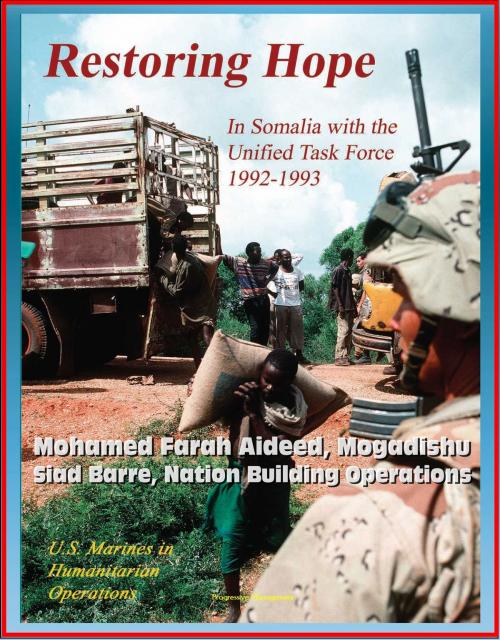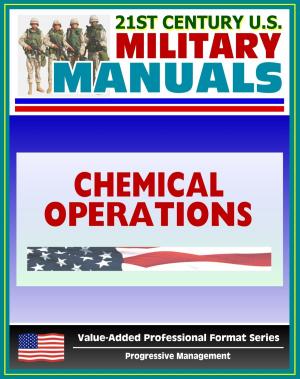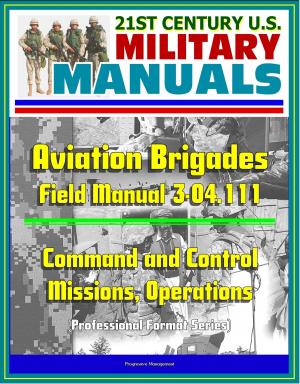U.S. Marines in Humanitarian Operations: Restoring Hope: In Somalia with the Unified Task Force, 1992 - 1993, Mohamed Farah Aideed, Mogadishu, Siad Barre, Nation Building Operations
Nonfiction, History, Military, United States| Author: | Progressive Management | ISBN: | 9781301629251 |
| Publisher: | Progressive Management | Publication: | January 3, 2013 |
| Imprint: | Smashwords Edition | Language: | English |
| Author: | Progressive Management |
| ISBN: | 9781301629251 |
| Publisher: | Progressive Management |
| Publication: | January 3, 2013 |
| Imprint: | Smashwords Edition |
| Language: | English |
This story of Operation Restore Hope relates how many issues unique to operations other than war were addressed and resolved by the commanding general of the Unified Task Force Somalia (UNITAF) and his staff. Because it is written specifically from the perspective of the command element and drawn from interviews, notes, and after action reports made at the time or shortly thereafter, this is a study of command, limited to that discrete portion of American involvement in Somalia that was the United States-led coalition under the command of Marine Lieutenant General Robert B. Johnston. It does not follow the actions of the individual components or members of the units that made up the coalition force beyond how they may have affected the work and mission of UNITAF.
Modern military operations other than war are, in many ways, similar to pacification operations conducted in Latin America and the Far East a century ago. In fact, the lessons learned sections of many modern after action reports are familiar to anyone who has read the Marine Corps' 1940 Small Wars Manual, a treatise of the Corps' experience in the Banana Wars, which was written before World War II. Sections of that manual emphasized that civic actions often affected mission accomplishment more than military actions, and stressed that Marines must both become attuned to local culture and remain aloof from domestic political squabbles to be successful.
The last decade of the 20th century brought great changes to the world, many of which affected the United States military. If the years 1980 to 1989 were a time of reformulating military doctrine and integrating new technologies, the years from 1990 to 1 999 were a time for testing those thoughts and instruments.
Part I - A Crisis in the Making * Chapter 1 * Descent Into Despair * The Beginning * Clans and Colonization * A Trust Territory * Unification and Independence * A Failed State * Operation Eastern Exit * Civil War and Anarchy * Part II - Operation Restore Hope * Chapter 2 * The Widening Mission * Historic Decision to Intervene * Initial Planning * First Steps * Organizing Tasks * Support Command * Coalition Partners * Chapter 3 * Plans and Preparations * Working with Central Command * Somali Opposition * Somali Terrain * Specified Tasks * Psychological Operations * Phases of the Operation * The Flow of the Force * Chapter 4 * Coming Ashore * Initial Landings * Logistical Buildup * Force Buildup * Into the Interior * Securing the Relief Sectors * Chapter 5 * Politics, Peace Talks, and Police * Military-Political Cooperation * Weapons Control and the use of Force * Reconciliation Conferences * Somali Police Forces * Chapter 6 * Moving to the Third Phase * Settling In and Daily Work * Mogadishu * Bale Dogle * Baidoa * Bardera * Oddur * Gialalassi * Merka * Belet Weyne * Kismayo * Morale and Restraint * Chapter 7 * Drawing Down the Forces * Naval Operations * Air Operations * End Game * Restructuring and Redeployment * UNITAF Redeployment * Coalition Shifts * Chapter 8 * Normality Begins to Return * Logistics * Medical Care and Health Issues * Engineering * Communications * Psychological Operations * Civil-Military Operations * Part III - Getting Out * Chapter 9 * Transition and Return * United Nations Relationship * Slow Transition to U.N. Control * Epilogue. * Notes * Appendices * Appendix A: Unified Task Force Somalia Organization * Appendix B: Glossary of Terms, Abbreviations and Somali Spelling * Appendix C: Chronology of Events and Operations * Appendix D: Citation
This story of Operation Restore Hope relates how many issues unique to operations other than war were addressed and resolved by the commanding general of the Unified Task Force Somalia (UNITAF) and his staff. Because it is written specifically from the perspective of the command element and drawn from interviews, notes, and after action reports made at the time or shortly thereafter, this is a study of command, limited to that discrete portion of American involvement in Somalia that was the United States-led coalition under the command of Marine Lieutenant General Robert B. Johnston. It does not follow the actions of the individual components or members of the units that made up the coalition force beyond how they may have affected the work and mission of UNITAF.
Modern military operations other than war are, in many ways, similar to pacification operations conducted in Latin America and the Far East a century ago. In fact, the lessons learned sections of many modern after action reports are familiar to anyone who has read the Marine Corps' 1940 Small Wars Manual, a treatise of the Corps' experience in the Banana Wars, which was written before World War II. Sections of that manual emphasized that civic actions often affected mission accomplishment more than military actions, and stressed that Marines must both become attuned to local culture and remain aloof from domestic political squabbles to be successful.
The last decade of the 20th century brought great changes to the world, many of which affected the United States military. If the years 1980 to 1989 were a time of reformulating military doctrine and integrating new technologies, the years from 1990 to 1 999 were a time for testing those thoughts and instruments.
Part I - A Crisis in the Making * Chapter 1 * Descent Into Despair * The Beginning * Clans and Colonization * A Trust Territory * Unification and Independence * A Failed State * Operation Eastern Exit * Civil War and Anarchy * Part II - Operation Restore Hope * Chapter 2 * The Widening Mission * Historic Decision to Intervene * Initial Planning * First Steps * Organizing Tasks * Support Command * Coalition Partners * Chapter 3 * Plans and Preparations * Working with Central Command * Somali Opposition * Somali Terrain * Specified Tasks * Psychological Operations * Phases of the Operation * The Flow of the Force * Chapter 4 * Coming Ashore * Initial Landings * Logistical Buildup * Force Buildup * Into the Interior * Securing the Relief Sectors * Chapter 5 * Politics, Peace Talks, and Police * Military-Political Cooperation * Weapons Control and the use of Force * Reconciliation Conferences * Somali Police Forces * Chapter 6 * Moving to the Third Phase * Settling In and Daily Work * Mogadishu * Bale Dogle * Baidoa * Bardera * Oddur * Gialalassi * Merka * Belet Weyne * Kismayo * Morale and Restraint * Chapter 7 * Drawing Down the Forces * Naval Operations * Air Operations * End Game * Restructuring and Redeployment * UNITAF Redeployment * Coalition Shifts * Chapter 8 * Normality Begins to Return * Logistics * Medical Care and Health Issues * Engineering * Communications * Psychological Operations * Civil-Military Operations * Part III - Getting Out * Chapter 9 * Transition and Return * United Nations Relationship * Slow Transition to U.N. Control * Epilogue. * Notes * Appendices * Appendix A: Unified Task Force Somalia Organization * Appendix B: Glossary of Terms, Abbreviations and Somali Spelling * Appendix C: Chronology of Events and Operations * Appendix D: Citation















